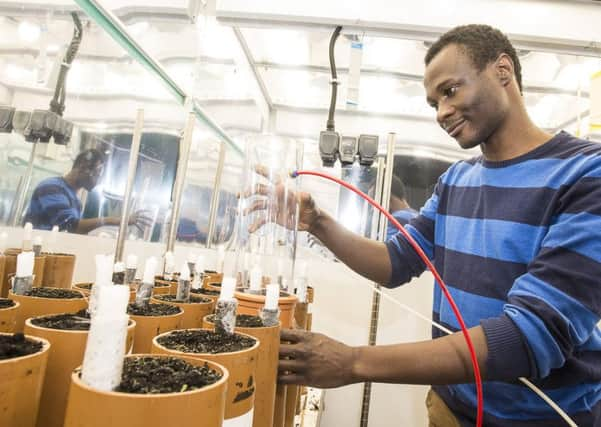'˜Higher water table can help cut emissions and protect farmland'


Such an approach could play a crucial role in slowing down climate change while protecting organically rich peat soils which have a major role in meeting the needs of the world’s growing population, according to scientists.
The research, led by Sheffield University academics, found that by increasing the level below which the ground is saturated with water - known as the water table - in radish fields by 20cm, carbon dioxide emissions from soil were reduced, crop growth improved and the rate of loss of peat soils converted into agricultural fields also fell.
Advertisement
Hide AdAdvertisement
Hide AdA significant proportion of the UK’s farming takes place on drained peatlands, which are some of the most productive soils for commercial agriculture, but draining naturally flooded peatlands triggers the carbon to oxidise and release carbon dioxide into the atmosphere.
Around a third of greenhouse gases released by humans are caused by agriculture.
Dr Donatella Zona, senior author of the study at Sheffield University, said: “It is estimated that in 30 years’ time the world’s population will reach 10 billion so it is vital that any means of reducing greenhouse gas emissions do not impact negatively on global food security.
“We are losing our peat soils in the UK at a fast rate, and we need to find solutions to decrease this loss if we want to preserve our food security.”
Advertisement
Hide AdAdvertisement
Hide AdIn their study, Dr Zona’s team and researchers from the universities of Exeter, Leicester and San Diego, raised the water table from 30cm to 50cm in agricultural peat soil collected from the Norfolk Fens - one of the UK’s largest lowland peatlands under intensive cultivation.
Dr Zona added: “Flooding peatland would be too extreme and damage crops, but increasing the water level by just 20cm maintains current food production - or as shown in our study even increases it - while at the same time reducing carbon oxidation and emissions.”
British farmers are already taking great strides to reduce their greenhouse gas emissions, said James Copeland, regional environment and land use adviser at the National Farmers’ Union.
“Greenhouse gases from UK agriculture has reduced by over 15 per cent since 1990 and farmers are committed to continuing to play their part through the Greenhouse Gas Action Plan,” Mr Copeland said.
Advertisement
Hide AdAdvertisement
Hide Ad“It’s in farmers interest to preserve their soil, and we are working with the agri-tech industry and research institutes to adopt techniques that balance the competing demand for high quality British food and sustainable peatland management.
He added: “Where it’s appropriate, the technology now exists to irrigate beneath the soil surface - effectively creating a new higher water table - but this can only be done where a crop is of sufficient value to justify the cost and soil preservation, productivity gains and GHG emission reduction lead to a win-win situation.”
The findings of the study have been published in the journal Science of the Total Environment and researchers will now analyse other crops, including celery, and look into the impact of fertiliser use on greenhouse gas emissions and productivity.